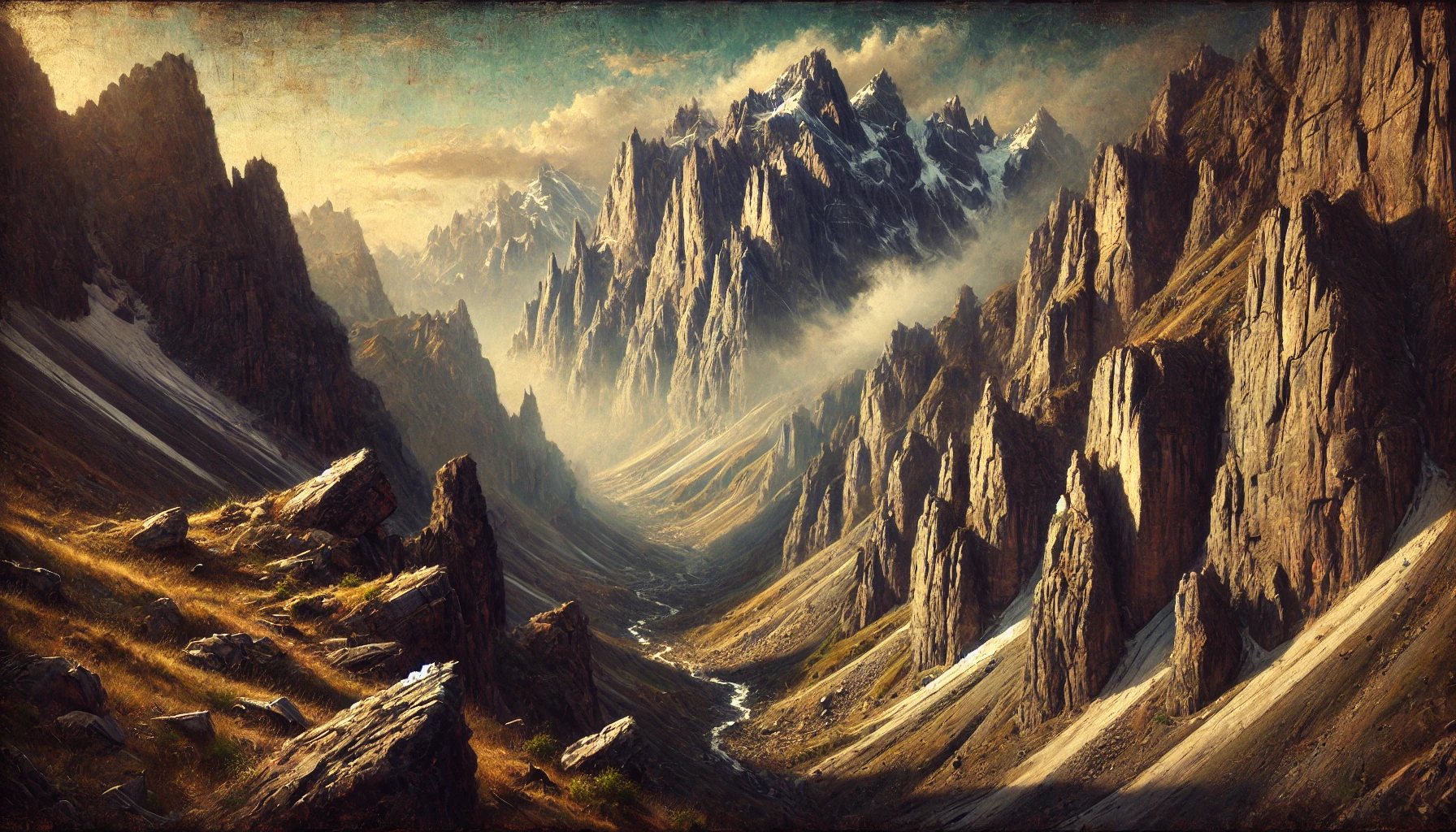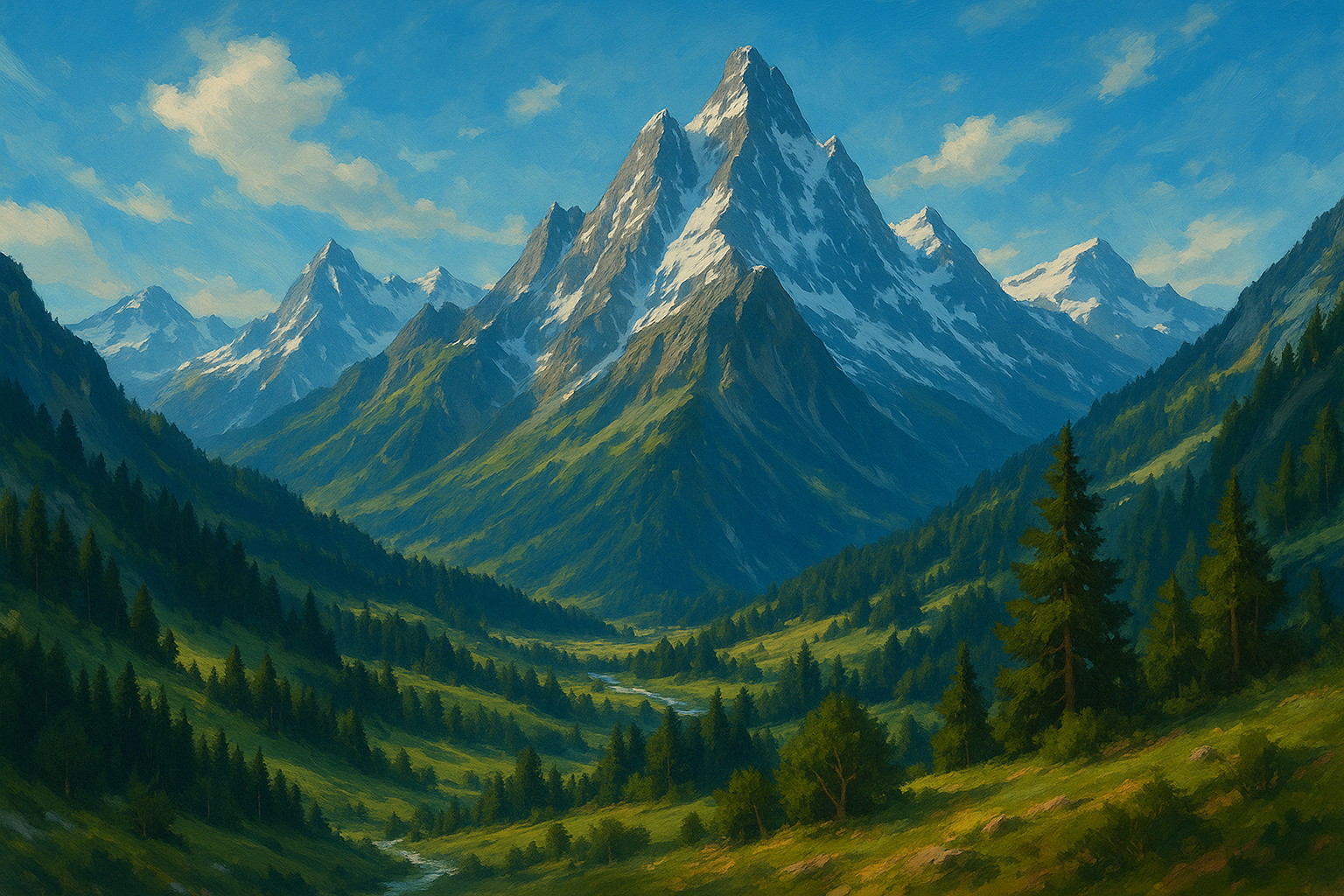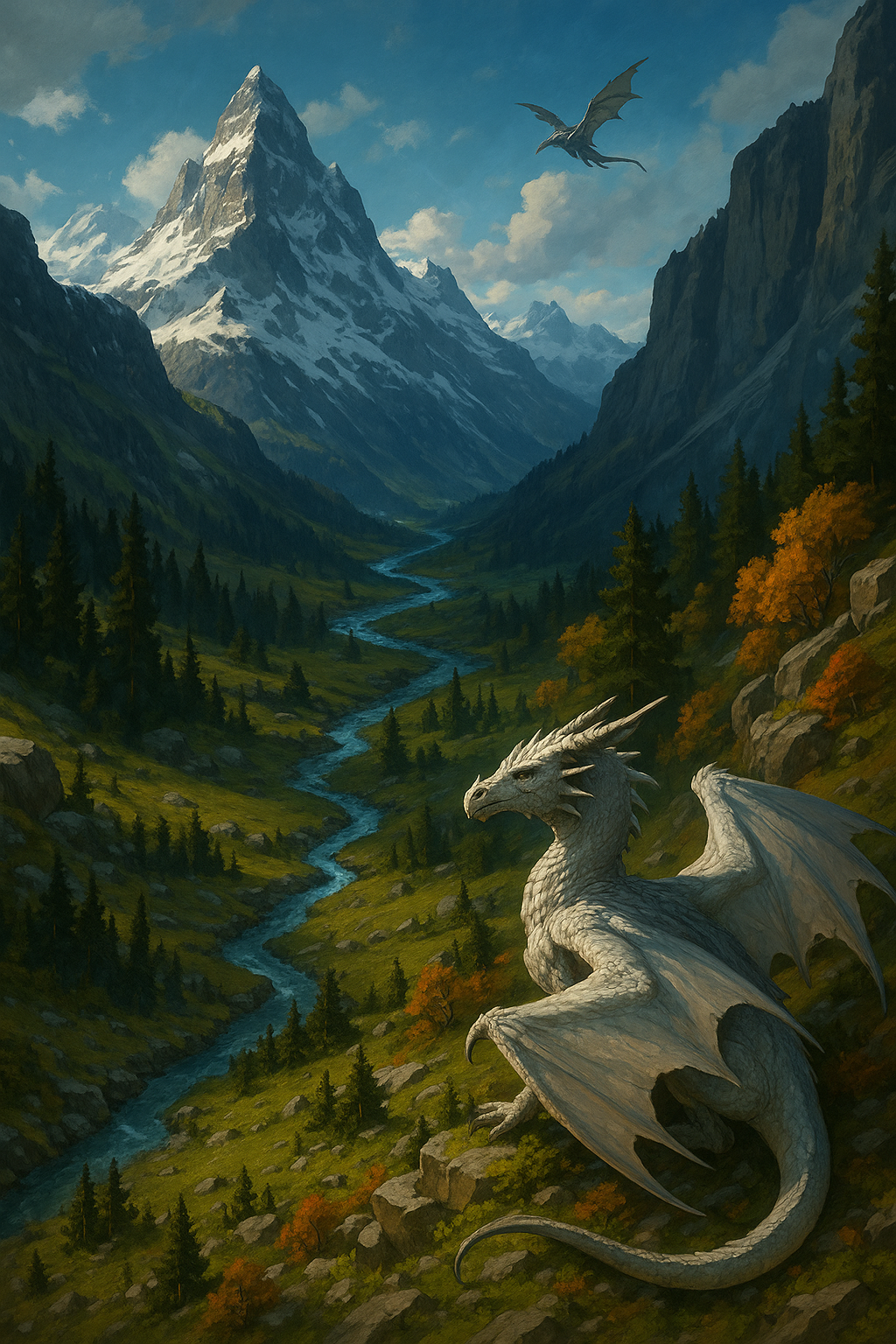Zandari Mountains
The Zandari Mountains are the defining geographical feature of Arandor, stretching like a jagged spine from the icy tundras of the north to the volcanic highlands in the south. This colossal range cleaves the continent in two, creating a stark divide between the arid deserts and steppes of Dhuma to the east and the fertile plains and verdant forests of Kamulos to the west. Their peaks pierce the clouds, snowcapped and eternal, while their lower slopes cradle dense forests, fertile valleys, and ancient dwarven roads.
The Zandari Mountains are the ancestral domain of the dwarves, who carved their city Weldenkont into the mountain’s roots and forged an empire on its rich mineral wealth. Human settlements cling to the western foothills, particularly near Elim, a city that grew from a dwarven trade outpost into Kamulos’ largest trade hub. Fortresses, shrines, and ruins from countless ages dot the range, remnants of the wars and legends that shaped its history.
Beyond being a natural wall, the Zandari Mountains control the balance of power in Arandor. Whoever holds the passes dictates trade and military movement. They also hold spiritual significance: many cultures see the peaks as sacred, formed by the gods as either a barrier or a prison. The dwarves claim the mountains themselves slumber, alive and aware, while others believe something ancient lies sealed beneath the stone.
Geography
The range runs uninterrupted for hundreds of miles, with only a few natural passes. To the west lies Kamulos, a land of green abundance, while to the east the terrain falls away into the sunbaked plateaus and sweeping deserts of Dhuma. The mountains narrow in the central regions, where Kadhar Pass allows trade and military movement between the two kingdoms. Further south, the range becomes more fractured, blending into rocky highlands and volcanic foothills.
Localized Phenomena
The Zandari’s leyline network bleeds energy into its environment, creating pockets of magical ecology. Crystals such as Arcanite form where lines converge, sometimes pulsing with light. Certain predators—like arcane drakes—feed not just on flesh but on magical essence, making them highly dangerous. Dwarves whisper of stone Elementals that awaken during seismic tremors, guardians born from the mountains themselves.
Climate
The climate is as varied as the range is long. The northern Zandari peaks endure year-round blizzards and freezing winds, forming an icy barrier few dare to cross. Central stretches enjoy temperate summers with treacherous winters, while the southern reaches are drier, where the mountains bleed into volcanic ridges and fumaroles that vent sulfurous steam.
Fauna & Flora
The lower western slopes flourish with dense pine and fir forests, dotted with oak and hardy deciduous trees. Herbs like frostmint (used in poultices for burns) and silverleaf (a rare alchemical ingredient) grow in shaded glades. Moving higher, vegetation shifts to alpine meadows where colorful wildflowers such as thunderbloom—rumored to glow faintly during storms—thrive among rocks.
On the eastern face, scrub vegetation like ironbark shrubs and desert sage dominate, adapted to dry winds from Dhuma. In southern volcanic regions, the soil’s heat allows the growth of emberfern and obsidian moss, plants infused with trace elemental magic.
Wildlife is equally stratified:
Lowlands – Wolves, elk, and wild boar roam the western foothills, while giant hawks and owlbears hunt from above.
Mid-elevations – Mountain goats, dire rams, and massive skyhorn elk navigate narrow paths. Predators include snow leopards and cave bears.
High Peaks – Few creatures survive; here dwell great eagles, frost drakes, and legends speak of a reclusive white wyvern called the Winter Fang.
Eastern Slopes – Adapted to aridity, creatures like sand cats, rock serpents, and ash vultures thrive.
Caves – Home to bat swarms, blind cave salamanders, and rare elemental beings formed around leyline nodes.
History
The Zandari Mountains have stood since the dawn of the Harmonium Era, their jagged peaks shaped by ancient draconic fire and divine upheaval during the last battles of the Calamity Era. Early dwarves carved their first halls here, believing the mountains to be the bones of a sleeping god. Countless conflicts have been fought over its passes, from the early tribal wars to the Dhuma–Kamulos skirmishes that defined border control. Despite centuries of conquest and trade, the range remains untamed, holding ruins of fallen fortresses, collapsed mines, and secrets buried deep within its stone.
The Zandari do not simply divide lands; they divide destinies. On one side, life blooms in green abundance. On the other, the sun scorches the earth bare. To cross them is to be tested by the gods themselves.
Type
Mountain Range
Location under
Included Organizations
Related Ethnicities






Comments